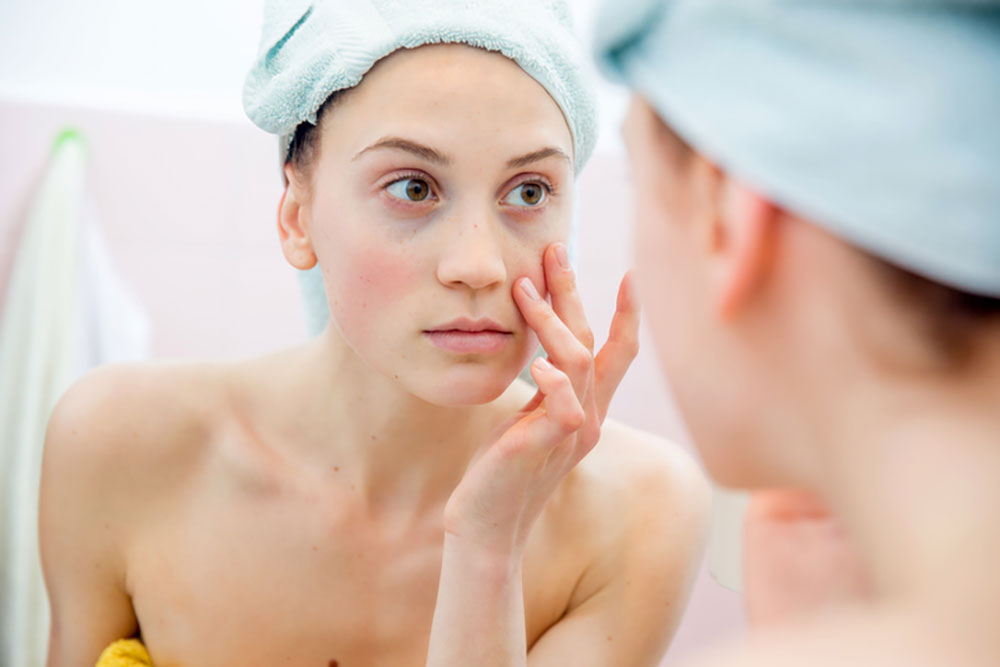
iStock photo.
By Valerie Monroe
If you’re interested in feeling happier about your appearance—especially as you age—you might like reading what she has to say about it. For more of her philosophical and practical advice, subscribe for free to How Not to F*ck Up Your Face at valeriemonroe.substack.com.

Can’t get enough Valerie Monroe? There’s more at https://valeriemonroe.substack.com.
REMEMBER WHEN we were examining the various issues we have about our eye area (or what I’m calling the house with a sagging roof, cloudy windows, and a shadowy basement). I’m afraid I abruptly abandoned you—due to what felt like an extravagantly long post. But I promised to shed additional light on dark shadows and such, so here we are.
To recap: Under-eye darkness can be due to a few different factors. If you press on the dark area and it disappears, your issue is probably visible blood vessels below your (delicate) skin. If the shadow doesn’t disappear with pressure, pigmentation is a likely culprit. Or there might be a shadow because of a deep tear trough. Puffiness can result because of an accumulation of fluid around the eyes or fat pads.
One thing I forgot to mention in that earlier post: Don’t bother with eye creams claiming to reduce puffiness and dark circles. The difference you’ll see is extremely minimal; they’re not worth the money. Better to hang on to your cash and use it at a dermatologist’s office, where you’re more likely to find real solutions.
Say you’ve got visible-blood-vessel-type shadows. To make them less apparent, you have to strengthen and thicken the skin under your eyes. If you read that and thought, “Sounds about as easy as running a marathon,” you’re right—and fair point. But consistent use of a prescription retinoid like Renova or an over-the-counter option like this one can help over time. At night, I apply a prescription retinoid right up to my lower lashes (being very careful not to get any in my eyes). If you’re interested in going the in-office route, a series of micro-needling treatments can help encourage collagen production and thus strengthen the skin, says dermatologist Kavita Mariwalla.
If your shadows are due to pigmentation, Mariwalla says a professionally administered mandelic acid peel can help. (Mandelic acid is an alpha-hydroxy acid derived from bitter almonds and is gentler than other AHAs.) She also suggests treatments with a PicoSure laser, which targets pigmentation (it’s used to remove tattoos) and can help significantly reduce shadows.
Tear troughs can cause indentations that cast shadows under the eye; strategically placed injections with a hyalauronic acid filler (dermatologist Mary Lupo likes the very thin Belatero) can reduce the indentation and—voilà!—somewhat lighten you up. (A reader called Kim suggests seeing an oculoplastic surgeon for filler around the eye area, which sounds sensible as long as he/she is practiced in that area of aesthetics.)
And then you’ve got your fat pads. Or maybe you don’t; good for you! If you are toting that baggage, a plastic surgeon can perform a lower blepharoplasty and remove or reposition fat pads through an incision in the lower lid, which smooths the under-eye area (and requires around two weeks recovery time). You’ve probably intuited I’m not one for randomly slicing ourselves up, but for people blessed with both dark circles and under-eye fat pads, a lower blepharoplasty can make a remarkable difference: A tony couple I knew (lovers of cocktails, sun, and sailing) had the procedure years ago and, almost overnight, they both looked as though they’d spent the last 20 years in a convent. Nice, if that’s what you’re going for; I liked their more weathered faces, too.
Which reminds me to say that sometimes under-eye bags are hardly unattractive. I mean, look at this face. And this one!
There is a bottom line to all this advice: When you want a lasting, visible difference for eye issues, nothing works as well as an in-office treatment. If you call a dermatologist or plastic surgeon for a consultation, just be sure to ask if there’s a fee. And another question you might want to ask (yourself): Are you absolutely sure it’s your face you’re unhappy with?

